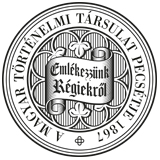Századok – 2015
2015 / 2. szám - KÖZLEMÉNYEK - Pósán László: Városlakó földbirtokosok a középkori Poroszországban
522 PÓSÁN LÁSZLÓ adományozta Genslacken udvarházat a hozzá tartozó földekkel, jószágokkal és ingóságokkal együtt. Königsberg Löbenicht a lovagoktól kapott 10 Hufe erdőterületen hozta létre Rathswalde majort (melynek a neve is egyértelműen jelezte tulajdonosát).135 Akár egy gazdag polgárcsalád, akár egy város tulajdonában is voltak majorságok, művelésük a többi (lovagrendi, püspöki, magánföldesúri) poroszországi földesúri saját kezelésű birtokhoz hasonlóan történt. Részben állandó személyzettel (szolgálókkal, cselédekkel), részben pedig fizetett idénymunkásokkal dolgoztattak, s csak ritkábban vettek igénybe paraszti robotot.136 URBAN-DWELLING LANDOWNERS IN MEDIEVAL PRUSSIA by Pósán László (Summary) Alongside trade, crafts and other activities connected to the provision of goods, the burghers of medieval towns also engaged in agrarian production. As other members of the Hanseatic league, the more important towns of the Teutonic Order owned wide stretches of land. Most of these were owned by the burghers themselves, and frequently served as pledges in credit affairs. Alongside the estates owned as private property, some of the urban lands were retained as undivided communal property, and were administered by the urban magistrature. Smaller parcels of them were liable for lease by the burghers, and the revenues thus collected flowed into the public coffers. The more well-off burghers, on the other hand, could also lease privately owned lands. The growing demand for land was connected to the equally incresing importance that brewing played in the economic life of the Prussian towns, and the need for barley and malt it generated. Rich families tried to obtain lands in areas which lay beyond the jurisdiction of their own town. This was most frequently done via purchase, but another method was also available as settler-entrepreneurs. Some among the rich patrician families came to own whole manors and even entire villages. In the last third of the 15th century the social elite of the Vistula region was no more constituted by the provincial military caste, but by the landowning urban patriciate. By obtaining a considerable amount of landed wealth, the well-to-do urban families became integrated into the provincial landowning society. The pieces of land acquired outside the jurisdictional area of the town were liable to burdens to be discharged according to the legal status of the land concerned. Thus, a patrician could own lands of peasant status and consequently burdened by census and other inferior services, such as servitium, for instance. Other estates, on the other hand, owned armed military service and were connected to other noble privileges. 136 Gause, F.: Die Geschichte der Stadt Königsberg i. m. 128-130. 136 Hartmut Boockmann: Die Vorwerke des Deutschen Ordens in Preußen. In: Die Grundherrschaft im späten Mittelalter I. Hg. Hans Patze (Vorträge und Forschungen XXVIL) Sigmaringen 1983. 565.; Pósán László: A Német Lovagrend poroszországi majorságai a 15. században. In: Memoria rerum. Tanulmányok Bán Péter tiszteletére. Szerk. Óborai Teréz, Á. Varga László, Eger 2008. 425-442.
